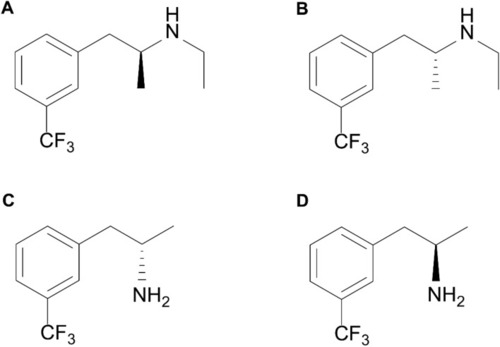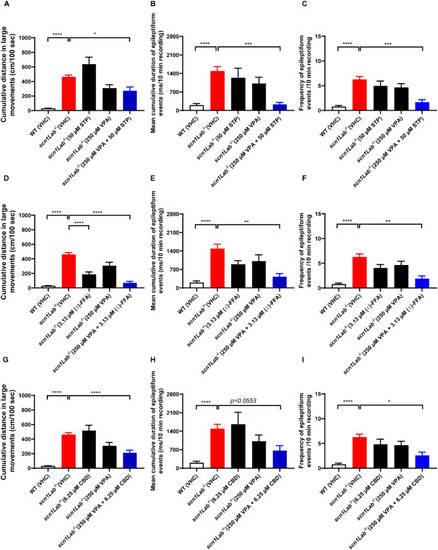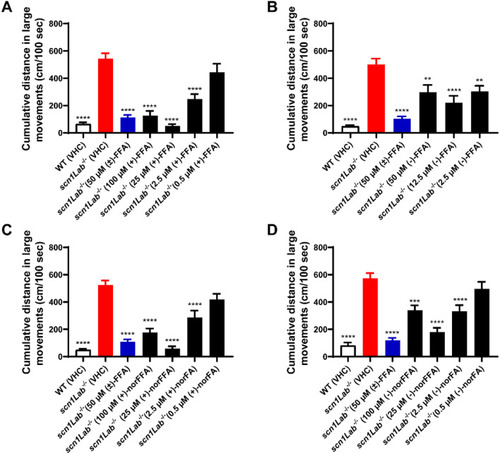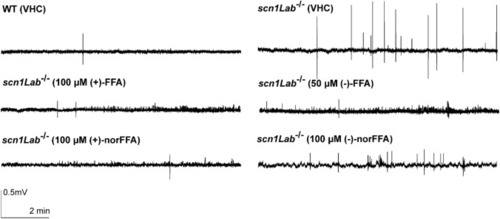- Title
-
Efficacy of Fenfluramine and Norfenfluramine Enantiomers and Various Antiepileptic Drugs in a Zebrafish Model of Dravet Syndrome
- Authors
- Li, J., Nelis, M., Sourbron, J., Copmans, D., Lagae, L., Cabooter, D., de Witte, P.A.M.
- Source
- Full text @ Neurochem. Res.
|
The structure of (+)-FFA ( |
|
Behavioral ( |
|
Behavioral ( |
|
The total uptake of (+)-FFA ( |
|
Behavioral antiepileptic activity of (+)-FFA ( |
|
Representative local field potential recordings. Ten-min noninvasive local field potential (LFP) recordings from the optic tectum of larvae pre-exposed to (+)-FFA, (−)-FFA, (+)-norFFA and (−)-norFFA for 22 h. |
|
Electrophysiological antiepileptic activity of (+)-FFA ( |







